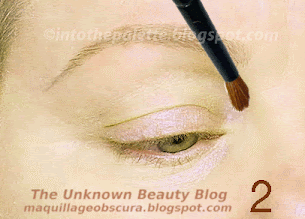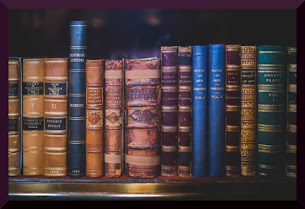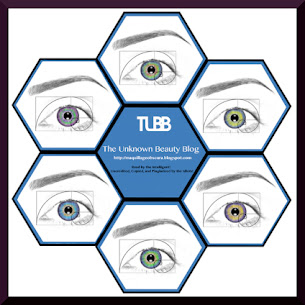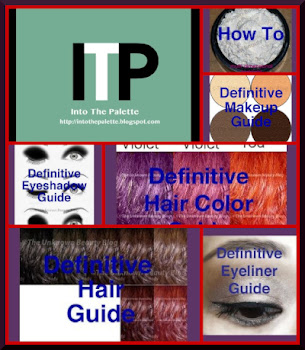Oh my! So many shapes and hair types! As you can see from the previous makeup brush posts, the hair shape and size is what really determines the application. This being said, it appears that most of the makeup brushes out there are for the eye area to make that perfect eye look.
Hair Shapes and Hair Types
You see one that says smoky eye brush and you want it because you think it will give you a smoky eye automatically. It doesn't. Or you buy that eyeliner brush and find it just doesn't give you the line you want. What gives? The brush shape, brush size, brush hair, and application technique are what you should take into consideration when shopping for an eyeshadow brush.
Let me see if I can break it down. This is specifically for the eye area only. The basic shape of brushes are:
- Angle-brows/liners
- Flat-brows/liners
- Round-(pointed and domed)-liner, crease, blender
- Filbert-(cat tongue)-liner, shadow, blender
- Fluffs-every other brush in between (will explain later)
- Specialized-fan for mascara, spoolie for mascara/brow
I probably missed some other shapes but these are the basic and normal shape, anything else is just something to catch your attention or a specialized shape for a makeup artist.
For hair there are these main varieties:
- Kolinsky sable and sable-the best for creams and liquids.
- Camel-not camel but a mix of pony, goat, squirrel. Good for powder products
- Pony-good for powder products
- Goat-good for powder products
- Squirrel-good for powder and for liquids that are an ink consistency.
- Badger-stiff bristle type. Good for brows
- Synthetics-quality varies. Higher quality mimics real hair and great with powder, liquids, and creams.
You know by now that kolinsky sable is the best hair for brushes, but do you really need this as eyeshadow brushes or in the size of eyeshadow brushes? If you are a makeup artist and will be working with different types of creams and liquids; for example alcohol based foundation products, RMG (rubber mask grease) foundation, aqua colors, special fx, then get the kolinsky sable. But if you are a regular consumer then all you need to know are the shape of the brushes. However, a kolinsky sable eyeliner brush is a very versatile one to have since it works on all types of formulas. Of course, if you find a bag of kolinsky sable brushes at the end of the rainbow with a pot of gold, then by all means use them and let the rest of us envy you.
Brows and Lashes
The following picture shows the usual brushes for brows and lashes which are angle, flat, spoolie, and fan. From top to bottom: disposable spoolie, fan brush (I trimmed it into the shape that worked for me.), art store synthetic angle, Hana K, Cinema Secrets #4 angle, Felulu brow/liner.
You are probably wondering how a fan brush works for the lashes. I showed this with fake lashes and white mascara. The tip of the fan is swiped with mascara then swiped onto lashes. I admit that it works better when applying it onto someone else then oneself. But I do use this on myself at times when my mascara isn't quite right. It is time consuming but keeps the clumps away. I also use this to smooth away the clumps of mascara by spritzing the brush with water then running the brush over my lashes to smooth the application. This brush also helps to blend the fake lashes into your own lashes with mascara. The disposable spoolie is just as good for mascara as the fan, just a matter of preference. And, if you are serious about makeup artistry you better have a good bag of these to avoid double dipping into your mascara when applying onto a client. Some people also use the flat liner brush to apply mascara. Nothing is written in stone, if it works for you then do it.
For brows you can use an angled brush and flat (straight edge) brush which both double as eyelining brushes. Besides the shape being different, the application technique differs a bit. In the picture you can see that with the Cinema Secrets angle brush:
- Step 1- the longer tip (blue arrow) touches the skin first which allows it to mimic the point of origin of the hair follicle when drawing brows.
- Step 2 - by applying some pressure a dark line can be drawn.
- Step 3 - by lightening the pressure and lifting the brush off the skin, you get what looks like brow hairs.
- Step 4 - the end result of a drawn brow.
- Step 5 & 6 - shows that the angle brush generally is tipped to allow the entire angle to rest on the skin to draw a line. This is mostly done in short strokes then blended together to form an even line.
The Hana K flat brush is actually an eyelining brush. Here, I show you how detailed it can get when it comes to drawing brows.
- Step 1 - the entire tip touches the skin and since this is actually a small detailed eyeliner brush, the initial touch will mimic the hair follicle's point of origin.
- Step 2 - a quick swipe and a single hair is drawn.
- Step 3 - shows how detailed it can get.
- Step 4 - shows the finished brow.
- Step 5 - the entire tip lies onto the skin to start eyelining.
- Step 6 - shows the finished line.
Okay, it wasn't that exciting but you can see that an angled brush draws hairs with the tip of the long end while a small straight one allows a more detailed eyebrow and eyeliner. But do you need this? I have seen eyebrows drawn on with what looks like dots and dashes emitting a Morse code signal of SOS! Yeah, a nice brow does help. It is once in a while fun to see what a meticulous brow looks like, and for anyone who has alopecia, brows are important that they not look like a block of color on the brow bone.
I just realized that I can't finish this brush post in one posting so I will have to cut this into another posting. I know these brush posts aren't that exciting as looking at makeup stashes, but a product doesn't apply itself. I will continue the next post with the eyeliners and eyeshadow brushes. Just stay tuned.
















